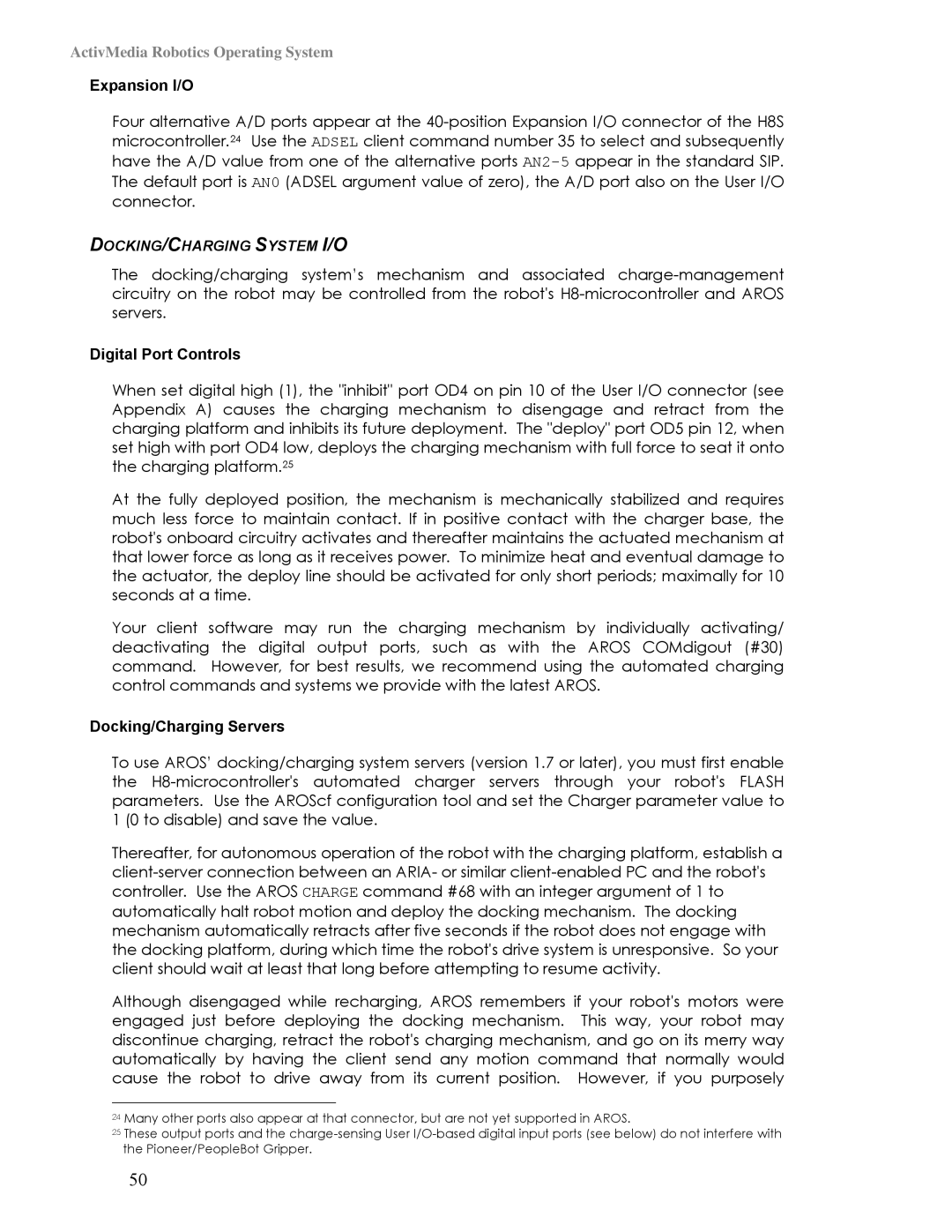ActivMedia Robotics Operating System
Expansion I/O
Four alternative A/D ports appear at the
DOCKING/CHARGING SYSTEM I/O
The docking/charging system’s mechanism and associated
Digital Port Controls
When set digital high (1), the "inhibit" port OD4 on pin 10 of the User I/O connector (see Appendix A) causes the charging mechanism to disengage and retract from the charging platform and inhibits its future deployment. The "deploy" port OD5 pin 12, when set high with port OD4 low, deploys the charging mechanism with full force to seat it onto the charging platform.25
At the fully deployed position, the mechanism is mechanically stabilized and requires much less force to maintain contact. If in positive contact with the charger base, the robot's onboard circuitry activates and thereafter maintains the actuated mechanism at that lower force as long as it receives power. To minimize heat and eventual damage to the actuator, the deploy line should be activated for only short periods; maximally for 10 seconds at a time.
Your client software may run the charging mechanism by individually activating/ deactivating the digital output ports, such as with the AROS COMdigout (#30) command. However, for best results, we recommend using the automated charging control commands and systems we provide with the latest AROS.
Docking/Charging Servers
To use AROS’ docking/charging system servers (version 1.7 or later), you must first enable the
Thereafter, for autonomous operation of the robot with the charging platform, establish a
Although disengaged while recharging, AROS remembers if your robot's motors were engaged just before deploying the docking mechanism. This way, your robot may discontinue charging, retract the robot's charging mechanism, and go on its merry way automatically by having the client send any motion command that normally would cause the robot to drive away from its current position. However, if you purposely
24Many other ports also appear at that connector, but are not yet supported in AROS.
25These output ports and the
50
